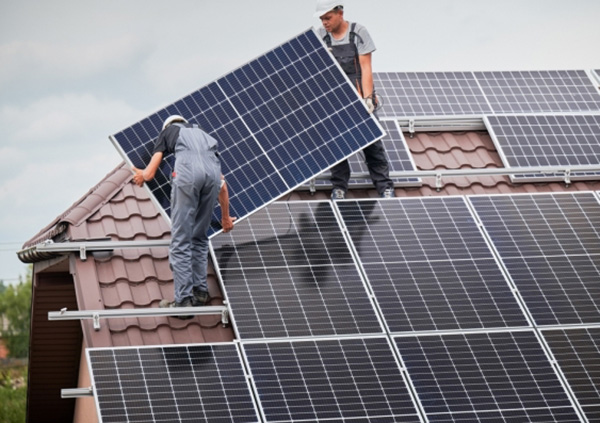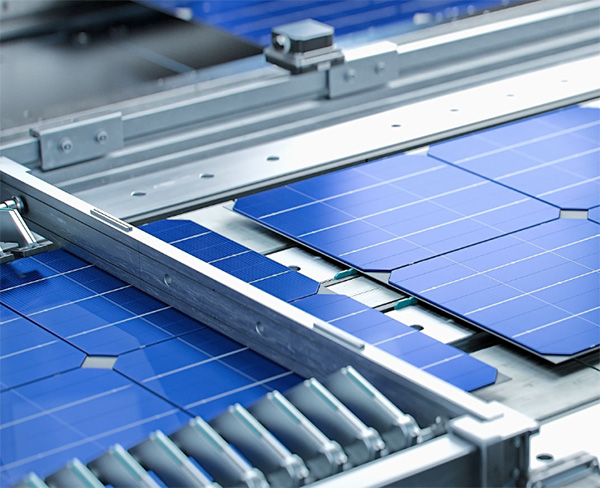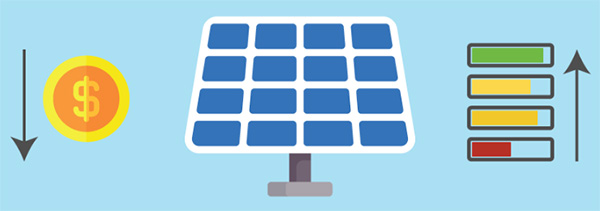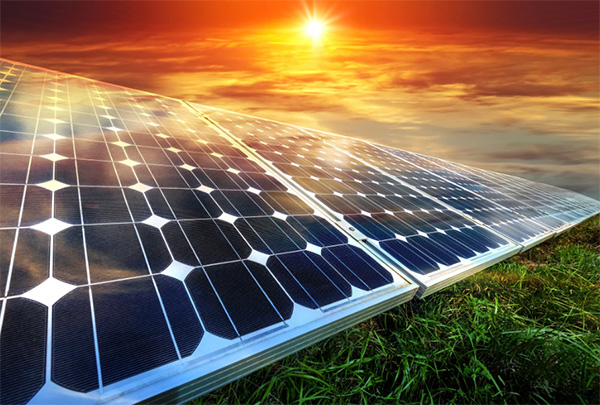Description
Solar panel prices increase with size and efficiency, but higher efficiency can yield more energy per square foot.

Solar Panel Sizes: An Overview
Solar panels come in a variety of sizes, each catering to specific applications and purposes. This diversity allows for better adaptability to different spaces and energy needs, and a more accurate alignment with a user's
budget.
Common Sizes and Their Applications
- Standard Residential Panels
Size: Typically around 65 inches by 39 inches
Power: Ranges from 250W to 360W
Application: Commonly used for residential rooftops to offset household electricity usage.
- Small Modules
Size: Approximately 20 inches by 40 inches
Power: Around 100W to 150W
Application: Ideal for smaller systems such as RVs, boats, and small off-grid applications.
- Large or Utility-Scale Panels
Size: About 78 inches by 39 inches
Power: Often exceeds 400W
Application: Used in large solar farms or commercial installations where there's a need for high power output.
- Portable or Foldable Panels
Size: Varies, but often around 30 inches by 20 inches when unfolded
Power: Between 50W to 100W
Application: Best suited for camping, hiking, and other outdoor activities.
While the size often dictates the
power output, other
factors like
efficiency and the
quality of materials used can also influence the panel's
performance.
Factors Determining the Size of Solar Panels
- Energy Needs: Before deciding on the size, one should first assess their average daily energy consumption. A larger household or commercial establishment typically requires a larger panel or multiple standard-sized panels.
- Available Space: The size of the rooftop or ground space available for installation can dictate the size and number of panels. For instance, smaller or irregularly shaped spaces might benefit from several small modules instead of standard residential panels.
- Budget Constraints: The cost of solar panels varies by size. While larger panels might offer more power, they also come with a higher price tag. Consumers need to balance their energy needs with their budget.
- Panel Efficiency: Higher efficiency panels can produce more energy in the same space, allowing users to opt for fewer or smaller panels. However, they might come at a higher cost.
- Projected Growth: If a user anticipates increased energy needs in the future, they might opt for larger panels or leave room for additional panels later on.
- Panel's Lifespan: Considering the lifespan or age of a solar panel, which usually ranges from 25 to 30 years, can also influence the size choice. Panels with a longer lifespan might be a more cost-effective choice in the long run.
Deciding on the right size is crucial not only for meeting energy needs but also for optimizing the return on investment. It's essential to factor in all these considerations, from
price to
quality, to make an informed decision.

Efficiency of Solar Panels
Solar panel efficiency has become a central talking point in discussions around renewable energy sources. With the increasing demand for sustainable energy, the efficiency of solar panels can significantly determine their value and utility in various applications. Simply put, a solar panel's efficiency is the measure of how well it can convert sunlight into electricity.
Defining Efficiency in Solar Panels
Efficiency is a measure of a solar panel's ability to convert sunlight into usable electricity. In technical terms, it's the ratio of energy output from the solar cell to the energy input from the sunlight. For example, if a solar panel has an efficiency of 20%, this means that 20% of the sunlight hitting the panel is being converted into electricity. Given that the average efficiency of panels on the market ranges between 15% to 20%, a panel with 20% efficiency is considered to be on the higher end of the spectrum.
However, it's worth noting that while higher
efficiency is generally better as it means you get more power from the same
size of panel, it also often comes with a higher
cost. So, balancing efficiency against the
price is crucial for most consumers.
Technological Advancements and Efficiency
Over the past few decades, there have been significant advancements in solar technology, leading to increased efficiencies. Here are some milestones:
- Monocrystalline Panels: These are made from a single crystal structure and can reach efficiencies of around 20%.
- Polycrystalline Panels: Made from multiple crystal structures, these typically have efficiencies ranging from 15% to 17%.
- Thin-Film Solar Cells: These are more flexible and lightweight but usually offer lower efficiencies, around 10-12%.
- PERC (Passivated Emitter and Rear Cell) Technology: A newer technology, PERC cells have an added layer at the back, which captures the light that passes through the cell, reflecting it back and providing another chance for absorption. This has boosted efficiencies to up to 22%.
- Bifacial Panels: These capture sunlight from both their front and back sides, harnessing reflected light from surfaces like white rooftops or the ground. They can increase energy output by up to 30% compared to standard panels.
The race for higher efficiency doesn't stop here. With continuous research and development, newer technologies, like multi-junction cells and quantum dots, promise even higher efficiencies in the future.
Factors Influencing Solar Panel Efficiency
Several factors can influence a solar panel's efficiency:
- Material Quality: The quality of the materials used in manufacturing the panels plays a significant role. Higher-grade silicon or other materials typically result in better efficiency.
- Temperature: Solar panels tend to decrease in efficiency as temperatures rise. That's why some panels are rated based on their performance at different temperatures.
- Angle and Orientation: The angle at which sunlight hits the panel and the panel's orientation relative to the sun can impact its efficiency.
- Age: Like most equipment, solar panels degrade over time. A panel's efficiency decreases as it ages, typically by about 0.5% to 1% per year.
- Dirt and Debris: Dirt, dust, or any other debris on the panel surface can block sunlight, reducing efficiency.
- Shading: Any shade on the panel, even from small obstacles like leaves or bird droppings, can significantly reduce efficiency.
Considering all these factors and regularly maintaining panels can ensure they operate near their peak efficiency throughout their
lifespan.

Price Variations Based on Size
Solar panels have diverse price points depending on their size. With the burgeoning solar industry, consumers have a plethora of choices, with brands like Tongwei Solar making significant strides in providing high-quality products. However, understanding the pricing structure based on size is essential to make an informed decision.
Cost Breakdown by Common Sizes
| Solar Panel Size |
Average Power (Watt) |
Estimated Cost Range (USD) |
| Small Modules |
100W - 150W |
$80 - $120 |
| Standard Residential Panels |
250W - 360W |
$200 - $360 |
| Large or Utility-Scale Panels |
>400W |
$320 - $600 |
| Portable or Foldable Panels |
50W - 100W |
$50 - $150 |
The prices mentioned above are approximate and can vary based on various factors such as
brand, technology used, and place of purchase. Notably, brands like
Tongwei Solar, known for their commitment to quality and innovation, might price their panels slightly higher, but the investment often means better performance and durability.
Economies of Scale in Solar Panel Production
With any production process, producing items in larger quantities usually results in a reduced cost per unit, a principle known as economies of scale. This principle applies to solar panels too. For instance, while large or utility-scale panels might have a higher absolute price than smaller panels, they often have a lower cost per watt. This means that, for the power they provide, they're more cost-effective.
Moreover, brands like Tongwei Solar, which have substantial production capacities, can benefit from these economies of scale, offering competitive prices for high-quality panels. This is primarily because bulk production reduces the average
cost of raw
materials, labor, and other overheads on a per-panel basis.
Comparing Costs: Small vs. Large Solar Panels
When assessing the
value of a solar panel, one shouldn't merely look at its price tag. The cost per watt is a more accurate measure of value. For example, a small module might be cheaper in absolute terms, but when you calculate the cost per watt, it might be pricier than a larger panel.
Using the above table as a reference, a 100W small module costing $100 has a cost of $1 per watt. On the other hand, a 400W large panel costing $320 has a cost of $0.80 per watt. Therefore, if space permits, investing in larger panels might be more economical in the long run, especially if you're considering brands like Tongwei Solar that balance price with impeccable
quality and performance.
In conclusion, understanding the intricacies of solar panel pricing based on size is crucial. It helps consumers make choices that are not just cost-effective but also yield the best performance for their specific needs.
Price Variations Based on Efficiency
The efficiency of solar panels significantly influences their pricing. As the world gravitates towards renewable energy, the efficiency of a solar panel can often be a determining factor in its adoption, especially for consumers keen on maximizing energy output from limited spaces. But, how does this efficiency relate to cost? Let's delve into the details.
High-Efficiency vs. Standard-Efficiency Panels
Efficiency in solar panels denotes the percentage of sunlight that gets converted into electricity. For instance, a panel with 20% efficiency can convert 20% of the received sunlight into usable power. Two broad categories dominate the market:
- High-Efficiency Panels: These typically boast an efficiency rate of 20% or more. Their material and manufacturing processes are often advanced, leading to better energy conversion rates. Monocrystalline panels, especially those with PERC technology or bifacial designs, frequently fall into this category.
- Standard-Efficiency Panels: Ranging between 15% to 19% efficiency, these panels are more common and usually more affordable. Polycrystalline panels are a popular choice in this segment.
When it comes to
cost, high-efficiency panels usually carry a higher price tag due to the advanced technologies and premium materials involved in their production.
Premium Pricing for Cutting-Edge Efficiency
With advancing technology, we're witnessing the rise of ultra-high-efficiency panels, some boasting efficiencies above 22%. These are often considered premium products in the solar market. Given their superior performance, manufacturers price these panels higher, reflecting the R&D, quality of materials, and advanced production techniques involved.
For instance, a standard 300W panel with 18% efficiency might cost around $250, resulting in a cost per watt of $0.83. In comparison, a 300W panel with 23% efficiency might be priced at $400, translating to a cost per watt of $1.33. This price discrepancy arises from the heightened
value that comes with increased efficiency.
Are High-Efficiency Panels Worth the Investment?
Deciding between high-efficiency and standard-efficiency panels comes down to individual
budget, available space, and energy needs.
Advantages:
- Space Saving: High-efficiency panels produce more electricity per square foot, making them ideal for those with limited rooftop space.
- Long-Term Savings: Over their lifespan, these panels can lead to more significant savings on electricity bills.
- Potential Incentives: Some regions offer tax incentives or rebates for installing high-efficiency solar solutions.
Disadvantages:
- Higher Initial Cost: The upfront investment for high-efficiency panels is usually higher, which might strain the initial budget.
- Diminishing Returns: The price increase doesn't always linearly match the efficiency gains. For instance, a 25% increase in price might only yield a 5% increase in efficiency.
In conclusion, understanding the relationship between price and efficiency is crucial when selecting solar panels. By aligning this knowledge with individual needs and constraints, consumers can make informed decisions that provide optimal value over time.

Comparing Price, Size, and Efficiency
In the solar industry, consumers often juggle three primary factors when selecting the right panels: price, size, and efficiency. Each factor plays a pivotal role in determining the overall value and performance of a solar system. Delving deeper into these factors ensures that users can strike the perfect balance tailored to their energy needs.
Price Per Watt: A Standard Measure
Price per watt is a standardized metric that helps consumers understand the cost relative to the power capacity of a solar panel. By evaluating the price per watt, buyers can make more informed decisions irrespective of the panel's size or efficiency.
For instance, if a 300W panel costs $300, its price per watt is $1. However, a 400W panel priced at $320 offers a price per watt of $0.80. While the latter is more expensive in absolute terms, it's more cost-effective based on the power it provides. This metric is vital when comparing panels of varying sizes and
efficiencies.
Factors to Consider When Investing in Solar Panels
Selecting the right solar panels entails more than just focusing on the initial price tag. Here's a breakdown of essential considerations:
- Efficiency: Represents how well a panel converts sunlight into electricity. A higher efficiency panel might be pricier, but it generates more power from the same size and light conditions.
- Size and Space: Depending on available space, users might prefer smaller high-efficiency panels over larger ones with similar output. Panel dimensions should align with the available installation area.
- Material Quality: The materials used in the solar panel impact its durability, performance, and lifespan. Premium materials often command higher prices but offer longevity and better performance.
- Brand Reputation: Established brands typically provide reliable warranties and are more likely to honor them, safeguarding your investment.
- Long-Term Costs and Savings: Beyond the initial expense, consider potential savings on energy bills, maintenance costs, and the lifespan of the panels.
Maximizing Return on Investment (ROI)
For many, the goal of investing in solar panels is to reduce electricity bills, reduce carbon footprints, or even generate a surplus to sell back to the grid. To optimize ROI:
- Evaluate Energy Needs: Before investing, analyze your energy consumption patterns. This insight ensures you buy panels that align with your actual energy requirements.
- Incentives and Rebates: Many governments offer incentives or rebates for solar installations. These can significantly reduce the overall investment, boosting ROI.
- Maintenance: Regularly maintaining and cleaning your panels extends their lifespan and ensures optimal performance. This consistent care can prevent potential losses from malfunctioning or inefficient panels.
- Consider Future Needs: If you plan to expand your property or anticipate increased energy consumption, consider panels that can accommodate these future needs.
In conclusion, by holistically assessing price, size, and efficiency, along with other nuanced factors, consumers can ensure they extract maximum
value from their solar panel investment. It's about striking the right balance between upfront costs and long-term benefits.







